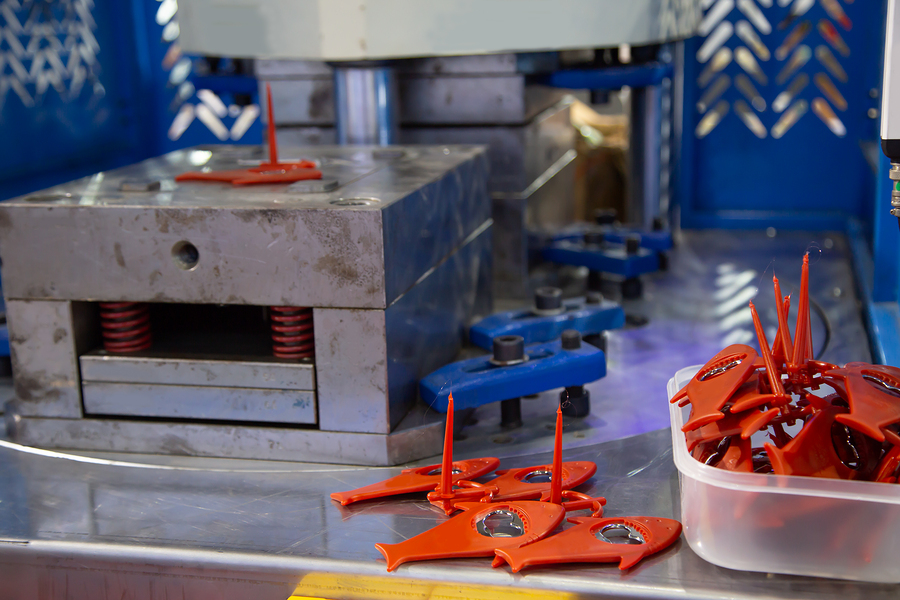The highly technical process of molten plastic injection molding leaves a lot of room for possibly expensive errors. These errors can range from minor defects to the issues that might affect the product’s performance and safety.
Here are some of the most common issues experienced during the injection molding process:
1. Jetting
The rapid cooling that happens when molten plastic first comes in contact with the mold walls often increases viscosity. The viscous plastic leaves scrape marks as it is pushed by the material flowing behind.
2. Vacuum voids
Vacuum voids are trapped pockets of air either close to the surface or within the injection molded part. Sometimes vacuum voids are caused by the incorrect alignment of the two halves of a mold. Most times, however, voids are a result of uneven solidification between the inner sections and the exterior surface of the part due to insufficient holding pressure.
3. Flash
Flash occurs when some molten plastic escapes the mold cavity either through the ejector pin locations or parting line. The escaped plastic then cools and remains attached to the final product.
Flash often occurs when worn out molds are used or when there is excessive pressure during plastic injection.
4. Surface Delamination
When foreign materials or contaminants come in contact with the molten plastic, they cannot bond, resulting in the contaminants separating from the finished product. The presence of these foreign materials leads to the appearance of thin surface layers on the part which is a condition known as surface delamination.
5. Flow lines
These are patterns or lines that appear on the part due to the molten plastic’s cooling profile and physical path as it flows into the tooling cavity. Flow lines might occur because of the varying speed with which the plastic flows through the bends and contours within the mold tool or when the plastic solidifies at different rates due to the low injection speed.
6. Burn Marks
Burn marks refer to the discoloration that appears on the surface of the finished part. This discoloration can either be caused by high injection speeds or by plastic material degradation as a result of excessive heating.
7. Short Shot
This occurs when molten plastic does not occupy the mold cavity fully. Short shots lead to the finished product becoming deficient.
Several factors cause short shots. Highly viscous plastic might solidify before occupying all the mold cavities, or inadequate venting of the gas might prevent the plastic material from occupying the space the gas is occupying already.
8. Weld Lines
Weld lines are lines or more accurately, planes that appear in the area where molten plastics is flowing from two different parts of the mold meet. They occur when there is partial solidification of the plastic leading to inadequate bonding of the flow fronts.
9. Sink Marks
When the inner parts of a finished product shrink, small depressions or craters often develop in the thicker areas. Many times, sink marks are a result of insufficient cooling mechanisms or time, preventing the plastic to fully cool while in the mold.
Low pressure in the cavity or too much temperature at the gate can also lead to the developing of sink marks on the finished product. Sink marks are likely to occur at thick sections of the molded part because they take longer to cool than the thin sections.
10. Warping
Warping refers to the deformation that happens due to the uneven shrinking of the different sections of the molded part. Because of the different cooling rates within the various parts of the mold, the molten plastic can sometimes cool differently leading to the creation of internal stresses. The release of these internal stresses is what causes warping.
Visit our site for information on custom plastic injection molded parts and assemblies.

